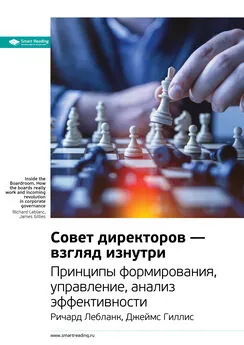Джеймс Клоусон - Лидерство третьего уровня: Взгляд в глубину
- Название:Лидерство третьего уровня: Взгляд в глубину
- Автор:
- Жанр:
- Издательство:Литагент Альпина
- Год:2017
- Город:Москва
- ISBN:978-5-9614-5040-8
- Рейтинг:
- Избранное:Добавить в избранное
-
Отзывы:
-
Ваша оценка:
Джеймс Клоусон - Лидерство третьего уровня: Взгляд в глубину краткое содержание
Лидерство третьего уровня: Взгляд в глубину - читать онлайн бесплатно ознакомительный отрывок
Интервал:
Закладка:
Gelb M. Learning to Think like Leonardo da Vinci. Delacorte Press, New York, 1998.
Gelb M.J. and Miller S. Caldicott. Innovate Like Edison Dutton, New York, 2007.
Oech R. von. A Whack on the Side of the Head. Creative Think, Menlo Park, CA, 1983.
Thompson Ch. What a Great Idea! Harper Perennial, New York, 1992.
Bennis W. Organizing Genius. Addison-Wesley, Reading, MA, 1997.
Cialdini R. Influence: The Psychology of Persuasion. Quill, New York, 1993.
Cohen A., Bradford D. Influence without Authority. John Wiley & Sons, Hoboken, NJ, 1991.
Dyer B., Dyer G. and Dyer J. Team Building: Proven Strategies for Improving Team Performance. Jossey Bass, San Francisco, CA, 2007.
Beer M., Spector B. and Lawrence P.R., D. Managing Human Assets. Q. Mills and R.E. Walton, The Free Press, New York, 1984.
DeGeus A. The Living Company. HBS Press, Boston, MA, 1997.
Kohn A. Punished by Rewards: The Trouble with Gold Stars, Incentive Plans, A's, Praise, and Other Bribes. Mariner, New York, 1999.
Schein E. Career Dynamics. Addison-Wesley, Reading, MA, 1978.
Senge P. **The Fifth Discipline: The Art and Practice of the Learning Organization. Doubleday, New York, 1990.
Senge P. The Necessary Revolution. US Green Building Council, New York (Senge), 2008.
Tichy N., et.al. "Strategic Human Resource Management," Sloan Management Review, 23, no. 2 (Winter 1982): 47–62.
Tichy N., Sherman S. Control Your Destiny or Someone Else Will. HarperCollins, New York, 1994.
Collins J. Good to Great. Harper Collins, New York, 2001.
H ammer M., Champy J. Reengineering the Corporation. Harper Business, New York, 1993.
Kotter J. Leading Change. HBS Press, Boston, MA, 1996.
Nevis E., Lancourt J. and Vassallo H.C. Intentional Revolutions. Jossey-Bass, San Francisco, CA, 1996.
O'Toole J. Leading Change. Jossey-Bass, San Francisco, CA, 1995.
Prochaska J., Norcross J.C. and DiClemente C.C. Changing for Good. HarperCollins, New York, 1994.
Quinn R. Deep Change. Jossey-Bass, San Francisco, CA, 1997.
Schein E. Process Consultation. Addison-Wesley, Reading, MA, 1969.
Watzlawick P., Weakland J.H. and Fisch R. Change. Norton, New York, 1974.
Сноски
1
Peter L.J., Hull R. The Peter Principle: Why Things Always Go Wrong (New York: Bantam, 1970).
2
Прежде чем вы приступите к чтению, рекомендуем пройти опрос «Стиль руководства».
3
Davis S.M. Future Perfect (Reading, MA: Addison-Wesley, 1987).
4
Senge P. The Fifth Discipline: The Art and Practice of the Learning Organization (New York: Doubleday, 1990).
5
См. например: Kaplan R.S., Norton D.P. The Balanced Scorecard: Measures That Drive Performance // Harvard Business Review, July 1, 2005, R0507Q.
6
Donnithorne L. The West Point Way of Leadership (New York: Currency Doubleday, 1993).
7
См.: Kouzes J., Posner B. The Leadership Challenge (San Francisco, CA: Jossey-Bass, 1987).
8
См. о повсеместно необходимом в организации «лидерстве с маленькой буквы» в кн.: Kotter J. The Leadership Factor (New York: The Free Press, 1988).
9
См.: Manz C. Self-Leadership // Academy of Management Review, 11, no. 3 (July 1986), p. 585.
10
Цит. по: Covey S. Spiritual Roots of Human Relations (Salt Lake City, UT: Desert Book Co., 1971).
11
Эти термины могут показаться слишком расплывчатыми, но данная аббревиатура более чем за десять лет применения в контексте обучения руководителей оправдала себя – она емкая и легко запоминается.
12
Skinner B.F. Beyond Freedom and Dignity (New York: Bantam, 1971).
13
См.: Taylor F.W. The Principles of Scientific Management (New York: Harper & Brothers, 1911).
14
См.: Brodie R. Virus of the Mind (Seattle, WA: Integral Press, 1996). Броди, расширяя концепцию Ричарда Докинса, называет эти «умственные вирусы» не ЦУПО, а «мемами».
15
См., например: Argyris C. Reasoning, Learning, and Action (San Francisco, CA: Jossey-Bass, 1982).
16
См., например: Quinn R.E. Beyond Rational Management (San Francisco, CA: Jossey-Bass, 1991).
17
Schein E.H. Organization Culture and Leadership (San Francisco, CA: Jossey Bass, 1985).
18
Этот подход способствует развитию индуктивного мышления – умения выявлять закономерности в новой информации. Современная система образования в большей степени ориентирована на дедукцию – рассмотрение известных шаблонов и закономерностей и их практическое применение. Распознавание закономерностей – это критически важный комплекс навыков в администрировании, поскольку менеджер часто действует в быстро меняющейся обстановке, для которой не предусмотрено проверенных формул поведения.
19
Эта позиция выражается во многих работах, но особенно советуем кн.: Nevis E.C., Lancourt J., Vassallo H.G. Intentional Revolutions (San Francisco, CA: Jossey-Bass, 1996).
20
Pine J., Gilmore J. The Experience Economy (Boston, MA: Harvard Business School Press, 1999).
21
Diamond J. Guns, Germs and Steel (New York: Norton, 1999).
22
Все три автора выступали с докладами на конференции Академии менеджмента в 2000 году в Торонто. Впоследствии Николсон выпустил книгу о генетических тенденциях в лидерстве Executive Instinct (New York: Crown Business Publishers, 2000). Уайт в продолжение своего исследования выступил соавтором статьи доклада Барбары Декер Пирс "The Evolution of Social Structure: Why Biology Matters," Academy of Management Review 24, no. 4 (1999), 843–853. Лоренс и Нитин Нориа в книге Driven (San Francisco, CA: Jossey-Bass, 2001) приводят свою интерпретацию этого периода культурного расцвета.
23
Человеческие сообщества, подобно курам с их порядком клевания и многим другим группам в животном царстве, всегда стратифицируются. Еще не было такого сообщества людей, которое не создавало бы иерархии. Единственный вопрос – каковы критерии этой иерархии.
24
Weber M. The Theory of Social and Economic Organization (New York: Free Press, 1947), 131.
25
Taylor F. Principles of Scientific Management (New York: Harper, 1911).
26
Morgan C. Images of Organization (Newbury Park, CA: Sage, 1986).
27
Senge P. The Fifth Discipline (New York: Doubleday Currency, 1990).
28
Clawson J.G. The New Infocracies: Implications for Leadership // Ivey Business Journal, May – June (2000): http://www.iveybusinessjournal.com/view_article.asp?intArticle_ID=219
29
Bennis W. The Coming Death of Bureaucracy // Think, November – December, 1966, 30–35.
30
См., например: Pinchot G., Pinchot E. The End of Bureaucracy and the Rise of the Intelligent Organization (San Francisco, CA: Berret Kohler, 1994).
31
Leavitt H.J. Top Down: Why Hierarchies Are Here to Stay and How to Manage Them More Effectively (Boston, MA: Harvard Business School Press, 2005).
32
См., например: Handy Ch. The Age of Paradox (Boston, MA: Harvard Business School Press, 1995).
33
Collins J.C., Porras J. I. Built to Last (New York: HarperBusiness, 1994).
34
Leavitt H. Corporate Pathfinders (Homewood, IL: Dow-Jones Irwin, 1986).
35
Из частной беседы с топ-менеджером NationsBank.
36
Peters T. The Tom Peters Seminar (New York: Vintage, 1994), 29.
37
См., например: Morrison T., Conaway W.A., Borden G.A. Kiss, Bow, or Shake Hands: How to Do Business in Sixty Countries (Avon, MA: Adams Media Corp., 1995).
38
Greenleaf R.К. Servant Leadership (Mahwah, NJ: The Paulist Press, 1977), 16.
39
Day G.S. The Capabilities of Market-Driven Organizations // Journal of Marketing, 58 (October 1994): 37–52.
40
Henderson B. The Origin of Strategy // Harvard Business Review, November 1, 1989, 89605.
41
Andrews K. The Concept of Corporate Strategy (Homewood, IL: Irwin, 1971, 1980).
42
Porter M. Competitive Advantage (New York: The Free Press, 1985).
43
Ibid. The Competitive Advantage of Nations (New York: The Free Press, 1990).
44
Prahalad C.K., Hamel G. The Core Competence of the Corporation // Harvard Business Review , May 01, 1990, 90311.
45
См.: Stalk G., Evans P., Shulman L.E. Competing on Capabilities: The New Rules of Corporate Strategy // Harvard Business Review, March 01, 1992, 92209.
46
Collins J.C., Porras J. I. Built to Last (New York: HarperBusiness, 1994).
47
См., например: Csikszentmihalyi M. The Evolving Self (New York: HarperCollins, 1993). См. также: Lawrence P. and Norhria N., Driven (San Francisco, CA: Jossey-Bass, 2001), где высказывается утверждение, что первое фундаментальное желание человека – это приобретательство.
Читать дальшеИнтервал:
Закладка:










